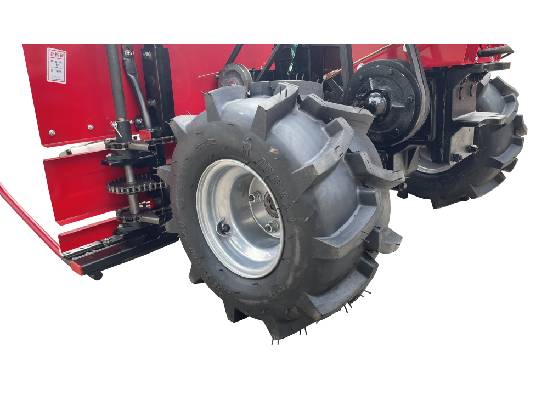Optimizing Soybean Harvesting with Advanced Cutting Reaper Technology
The Evolution of the Soybean Cutting Reaper A Game Changer for Agriculture
The soybean industry has undergone tremendous transformation over the past few decades, largely due to advancements in agricultural technology. One of the most significant innovations in this field is the soybean cutting reaper, a machine designed to streamline the harvesting process of soybeans, ultimately boosting efficiency and productivity in farming operations. This article explores the evolution, benefits, and future prospects of the soybean cutting reaper, shedding light on why this machine has become a staple in modern agriculture.
Historical Context
Historically, soybean harvesting was a labor-intensive process. Farmers relied heavily on manual labor, using scythes and sickles to cut down the crops. This method was not only time-consuming but also physically demanding. As demand for soybeans increased, there arose a need for more efficient harvesting methods. Enter the cutting reaper—a mechanical device that has revolutionized the way farmers approach soybean harvesting.
The first mechanical reapers were developed in the early 19th century and were initially used for cereal crops. However, it wasn't until the mid-20th century that specialized models for soybeans became available. These machines were designed to handle the unique characteristics of soybeans, such as their growth height and brittle stems. As technology advanced, so did the capabilities of these machines, incorporating features that improved their efficiency, adaptability, and ease of use.
Features and Benefits
Modern soybean cutting reapers come equipped with a range of features that enhance their performance. One of the primary benefits of using a cutting reaper is its speed. These machines can harvest large swathes of land in a fraction of the time it would take for a team of manual laborers, allowing farmers to cover more ground and reduce the risk of crop loss due to adverse weather conditions.
In addition, cutting reapers are designed with advanced technologies such as GPS navigation and automatic height adjustment. GPS systems allow for precision farming, enabling farmers to optimize their harvesting routes and minimize overlap. Automatic height adjustment ensures that the reaper operates at the ideal cutting height, maximizing yield and reducing waste.
Another key benefit of using soybean cutting reapers is the reduction of labor costs
. As the agricultural sector faces labor shortages, particularly in rural areas, the use of such machinery becomes increasingly essential. Reapers can be operated by a small crew and often require less maintenance and oversight than a large workforce, making them a financially viable option for many farmers.soybean cutting reaper

The Environmental Impact
With the growing awareness of environmental issues in agriculture, the soybean cutting reaper also plays a role in sustainability. By facilitating more efficient harvesting processes, these machines help reduce the amount of fuel consumed during harvesting, leading to lower greenhouse gas emissions. Moreover, the precision offered by advanced models reduces soil compaction, preserving soil health for future planting seasons.
Additionally, the increased efficiency allows farmers to implement better crop rotation practices, ultimately contributing to a more sustainable agricultural model. Healthy soil and varied crop outputs can enhance biodiversity on farms, making them more resilient to pests and diseases.
Future Prospects
Looking ahead, the future of soybean cutting reapers appears promising. Ongoing advancements in artificial intelligence and robotics may lead to the development of autonomous harvesting machines that can operate with minimal human intervention. These smart machines could analyze crop conditions and make real-time adjustments, further optimizing the harvesting process.
Furthermore, as the global demand for soybeans continues to rise, driven by factors such as population growth and increased livestock production, the need for efficient and sustainable harvesting methods will only grow. The soybean cutting reaper will undoubtedly remain a central component of modern agricultural practices, supporting farmers in meeting this demand while also contributing to environmental stewardsh ip.
Conclusion
In conclusion, the soybean cutting reaper is much more than just a piece of machinery; it represents the advancement of agricultural practices and a commitment to efficiency and sustainability. As we move into an era of increasingly complex agricultural challenges, innovations such as the soybean cutting reaper will continue to play a critical role in shaping the future of food production, ensuring that farmers can meet the needs of a growing population while taking care of the planet. The adaptability and improvements in technology signal a bright future for this essential tool in modern farming.
Latest news
-
When to Upgrade Your Old Forage HarvesterNewsJun.05,2025
-
One Forage Harvester for All Your NeedsNewsJun.05,2025
-
Mastering the Grass Reaper MachineNewsJun.05,2025
-
How Small Farms Make Full Use of Wheat ReaperNewsJun.05,2025
-
Harvesting Wheat the Easy Way: Use a Mini Tractor ReaperNewsJun.05,2025
-
Growing Demand for the Mini Tractor Reaper in AsiaNewsJun.05,2025







